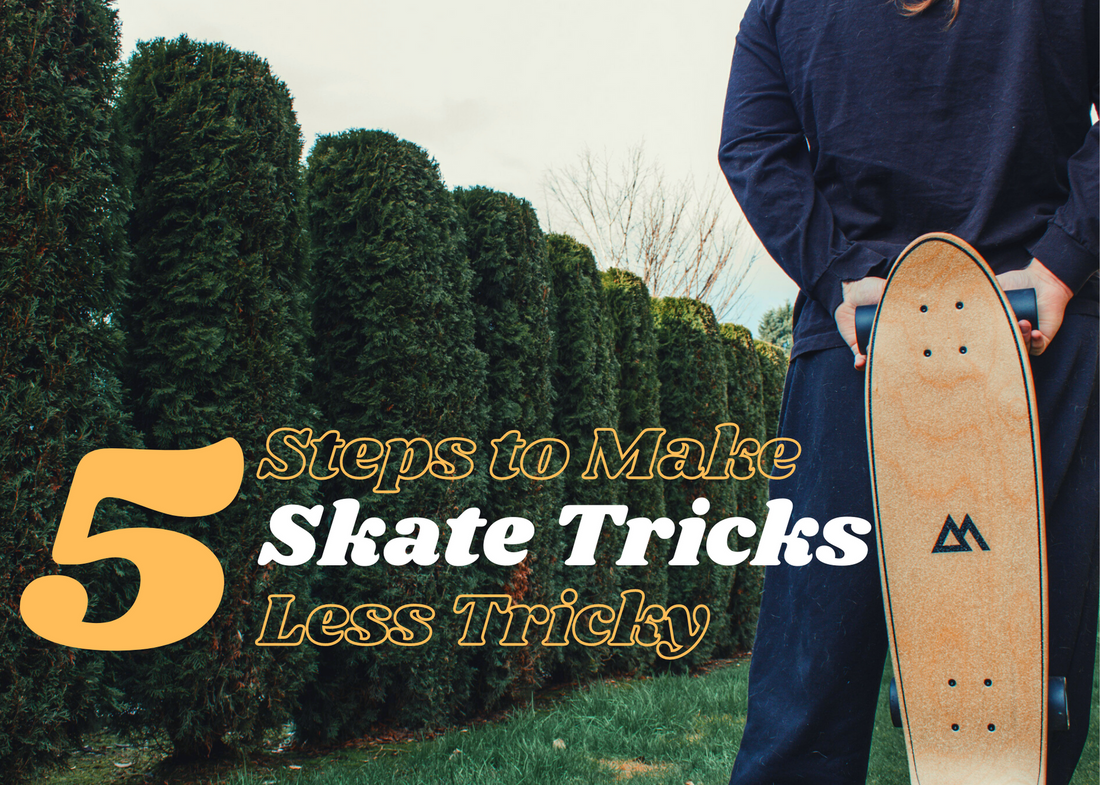So you’re ready for the world of skateboarding tricks – a milestone in every novice skater’s journey. Something to keep in mind is the trick before your first trick: getting into the right mindset.
Step 1: Mindset
Skateboard tricks are a fantastic use of your board, and a great way to stay active. The fact of the matter (that sometimes holds people back) is there is a learning curve. Combine this learning curve with the fact that we are on wheels, and it’s no wonder we all experience some falls, bumps and bruises along the way. If this evokes fear, just remind yourself that even professional skaters experienced this when they were new. It’s normal, which means it’s not a bad idea to invest in some proper skateboard protective gear, such as a helmet, knee pads and elbow pads.
In addition to overcoming any fear of falls, mindset preparedness also means being determined. Hey, maybe you are a natural prodigy and will find that you barely fall and excel quickly; that’s awesome! However if you’re like the other 99.999% of us, becoming great at skateboard tricks will require your determination. It’s not uncommon to learn a trick within a couple of focused hours, but if it takes you longer don’t be hard on yourself. After all, creative trial and error is at the heart of what skateboarding is all about.
Having the right mindset ensures everything else goes smoothly.
Step 2: Get acquainted and comfortable with your board.
The first physical thing to accomplish with your board is learning to push forward without looking down. Achieving this marks significant progress in your balance and mind-body coordination as a skateboarder. Focus on getting to know your board, and getting comfortable.
A bonus skill to learn before your first trick is tacs. Tic tacking simply means slight zig zagging on your skateboard. This shows you’ve achieved not only great balance, but excellent control over your board.
Step 3: Pick Your Trick
For this example, let’s learn how to Ollie. Itt’s widely accepted that the ollie is an appropriate first trick to learn, as it’s the basis of so many other tricks and enables you to easily progress to skateboard grinds and slides. It’s truly the foundation of many tricks you will learn down the road.
Step 4: Learn How the Ollie Works
Many beginner skateboarders make the mistake of simply jumping and expecting the board to jump with them, but in truth there is a bit more physics that goes into it. For successful ollies, as you jump you must kick (downward) the back tail of your skateboard. This is what causes the front end of your skateboard to rise into the air.
In one fluid motion, you must then glide your front foot forward (along the board) while mid-jump. This is what causes the back end of your board to raise upward, and gives the visual effect of the board being an extension of you.
Step 5: Practice Stationary First
If you’re a total newbie, it’s a good idea to practice a stationary version of the trick you want to learn. Practicing skateboard tricks “stationary” means attempting the trick while your board is not in motion. Stand still and balanced atop your board, getting comfortable in your stance, and give the trick a go. Some people recommend practicing on grass, but keep in mind that grass feels nothing like cement, and doesn’t absorb the pop the way smooth, hard ground will.
Step 6: Give it a go
When you feel confident with your mindset, can push without looking at your board, have an understanding of how the trick works, and have given it a decent amount of stationary tries, it’s time to give it a real shot! Remember, most likely you will fall, and that’s okay. It’s always a good idea to use proper skate protective gear. If you feel weird wearing a helmet and pads at the skate park or wherever you’re practicing… don’t. Even professional skaters wear helmets and pads.

